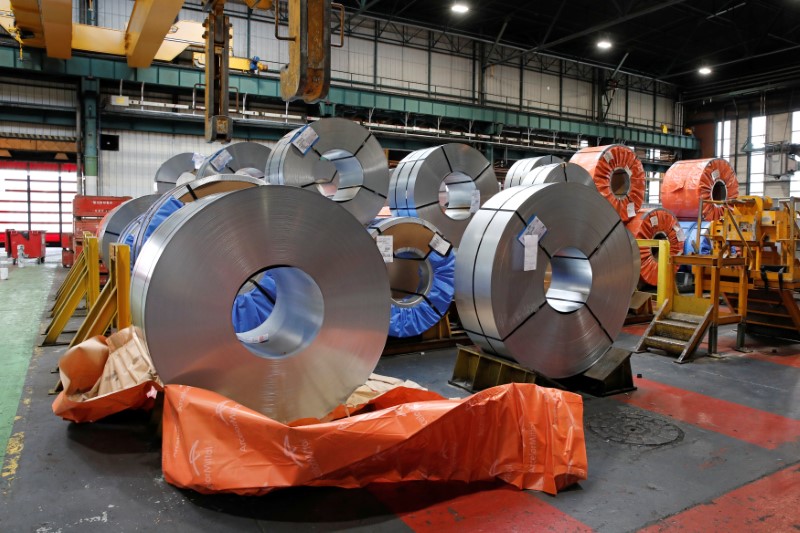By Maytaal Angel
LONDON (Reuters) - European steel association Eurofer raised its 2017 EU steel demand forecast on Monday but said isolationist measures such as a U.S. plan to levy steel tariffs on national security grounds could be disastrous for global trade flows.
Eurofer said apparent EU steel demand, which includes inventory changes, will rise 1.9 percent this year to 159 million tonnes. It previously forecast demand, seen as a gauge of regional economic health, would rise 1.3 percent in 2017.
Despite the raised forecast, the association issued its starkest warning yet about potential import distortions, saying regions mills could again fail to benefit from demand growth and instead lose market share to imports.
"With no structural solutions for the underlying problem of global overcapacity in sight, the number of protectionist and even isolationist measures look set to increase," Eurofer director general Axel Eggert said in a statement.
"In particular, measures potentially stemming from the U.S. section 232 investigation may lead to a proliferation of disastrous global trade flow distortions."
The United States launched a "section 232" probe in April into whether imports of steel, the second biggest industry in the world after oil and gas, posed a risk to national security.
Though the move is aimed primarily at top global steel producer China, Eurofer fears EU countries will bear the brunt of the measures because Chinese steel is already largely subject to U.S. restrictions.
It is also concerned that steel headed for U.S. shores will be re-routed to the EU.
Invoking national security in peacetime is seen by trade experts as a move that risks undermining the global rules-based trading system by sparking retaliatory action around the world in products beyond steel.
At a weekend summit in Germany, leaders from the world's 20 leading economies set an August deadline for an OECD-led global forum to compile information about steel overcapacity, with a report on potential solutions due in November.
Eurofer expects apparent EU steel demand to moderate to a 1 percent growth rate next year, as the impact of economic stimulus measures fade. The association previously forecast demand would grow 1.2 percent next year.
European steel prices
Although China cut some 65 million tonnes of steel capacity in 2016 and aims to cut another 50 million tonnes this year, its trading partners say much of the cuts cover already idled capacity and that the problem of unfairly traded steel remains.
Chinese steel exports [MTL/CHINA3] fell 25.7 percent in the first five months of this year. However, the country still accounts for about a quarter of global steel exports and about half of the world's spare steelmaking capacity.
